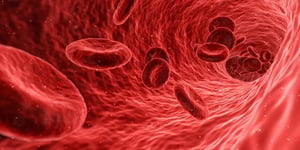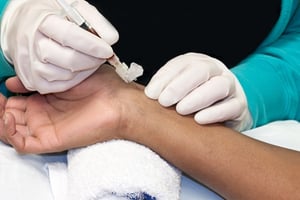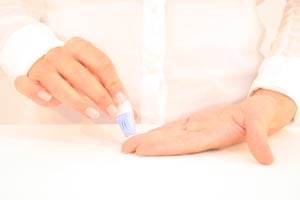Share this
the best way to collect a blood sample
by Neoteryx Microsampling on Mar 28, 2017 7:30:00 AM
 How you draw blood depends at least in part on the nature of the condition being tested for, but most commonly involves inserting a needle into a vein. Usually, medical practitioners draw samples in their offices, at times convenient for them (if not always for patients). But that could be changing.
How you draw blood depends at least in part on the nature of the condition being tested for, but most commonly involves inserting a needle into a vein. Usually, medical practitioners draw samples in their offices, at times convenient for them (if not always for patients). But that could be changing.
Arterial Sampling
 This form of blood collection most commonly takes place within a hospital environment. It is used in the identification of metabolic, respiratory, and mixed acid-base disorders, where CO2 levels require understanding or monitoring. While generally safe, the procedure can be upsetting and painful for the patient. There are also several potential contradictions that can affect the site of the collection, such as an abnormal modified Allen test or local infection. There is also an increased risk of bleeding complications in patients with coagulopathy.
This form of blood collection most commonly takes place within a hospital environment. It is used in the identification of metabolic, respiratory, and mixed acid-base disorders, where CO2 levels require understanding or monitoring. While generally safe, the procedure can be upsetting and painful for the patient. There are also several potential contradictions that can affect the site of the collection, such as an abnormal modified Allen test or local infection. There is also an increased risk of bleeding complications in patients with coagulopathy.
Venipuncture Sampling
 Venipuncture is the most common way to collect blood from adult patients. Collection takes place from a superficial vein in the upper limb, generally the median cubital vein; this vein is close to the skin and doesn’t have many large nerves positioned close by. This reduces pain and discomfort for the patient. Venipuncture can take place in a general medical practitioner’s office and is often carried out by a trained phlebotomist or nurse.
Venipuncture is the most common way to collect blood from adult patients. Collection takes place from a superficial vein in the upper limb, generally the median cubital vein; this vein is close to the skin and doesn’t have many large nerves positioned close by. This reduces pain and discomfort for the patient. Venipuncture can take place in a general medical practitioner’s office and is often carried out by a trained phlebotomist or nurse.
However, its commonality does not equate with it being the best way to collect a blood sample. Many patients find it inconvenient and worrisome. There are also risks related to the storage, transportation, and potential loss or contamination of the blood samples once they are collected. These same concerns also affect the suitability of arterial sampling.
Fingerstick Sampling
 Fingerstick or fingerprick sampling involves taking a very small amount of blood from the patient, usually from the end of a finger. It is over quickly and requires very little in the way of preparation; therefore, reducing concern and anxiety in patients, particularly in children and nervous adults.
Fingerstick or fingerprick sampling involves taking a very small amount of blood from the patient, usually from the end of a finger. It is over quickly and requires very little in the way of preparation; therefore, reducing concern and anxiety in patients, particularly in children and nervous adults.
Patient welfare at the point of collection is not the only reason why this method should be considered. The long-term benefits to the patient include the loss of less blood and the ability for patients to self-collect specimens at home, as a phlebotomist is not required for the procedure.
Arterial and venipuncture sampling are still very common and will always have their places in medicine and patient care. However, with advances in technology and greater understanding of blood sampling, fingerstick collection is gaining ground. Companies like Neoteryx continue to advance blood collection and sampling, with expert tracking using a bar code system, making any loss of samples less likely. Technological advances also mean reduced contamination risks and reduced costs. It is no wonder that microsampling is becoming the preferred method of blood sample collection.
Share this
- Microsampling (206)
- Research, Remote Research (119)
- Venipuncture Alternative (105)
- Clinical Trials, Clinical Research (83)
- Mitra® Device (73)
- Therapeutic Drug Monitoring, TDM (51)
- Dried Blood Spot, DBS (39)
- Biomonitoring, Health, Wellness (30)
- Infectious Disease, Vaccines, COVID-19 (24)
- Blood Microsampling, Serology (23)
- Omics, Multi-Omics (21)
- Decentralized Clinical Trial (DCT) (20)
- Specimen Collection (18)
- Toxicology, Doping, Drug/Alcohol Monitoring, PEth (17)
- Skin Microsampling, Microbiopsy (14)
- hemaPEN® Device (13)
- Preclinical Research, Animal Studies (12)
- Pharmaceuticals, Drug Development (9)
- Harpera Device (7)
- Industry News, Microsampling News (5)
- Antibodies, MAbs (3)
- Company Press Release, Product Press Release (3)
- Environmental Toxins, Exposures (1)
- July 2025 (1)
- May 2025 (1)
- April 2025 (2)
- December 2024 (2)
- November 2024 (1)
- October 2024 (3)
- September 2024 (1)
- June 2024 (1)
- May 2024 (1)
- April 2024 (4)
- March 2024 (1)
- February 2024 (2)
- January 2024 (4)
- December 2023 (3)
- November 2023 (3)
- October 2023 (3)
- September 2023 (3)
- July 2023 (3)
- June 2023 (2)
- April 2023 (2)
- March 2023 (2)
- February 2023 (2)
- January 2023 (3)
- December 2022 (2)
- November 2022 (3)
- October 2022 (4)
- September 2022 (3)
- August 2022 (5)
- July 2022 (2)
- June 2022 (2)
- May 2022 (4)
- April 2022 (3)
- March 2022 (3)
- February 2022 (4)
- January 2022 (5)
- December 2021 (3)
- November 2021 (5)
- October 2021 (3)
- September 2021 (3)
- August 2021 (4)
- July 2021 (4)
- June 2021 (4)
- May 2021 (4)
- April 2021 (3)
- March 2021 (5)
- February 2021 (4)
- January 2021 (4)
- December 2020 (3)
- November 2020 (5)
- October 2020 (4)
- September 2020 (3)
- August 2020 (3)
- July 2020 (6)
- June 2020 (4)
- May 2020 (4)
- April 2020 (3)
- March 2020 (6)
- February 2020 (3)
- January 2020 (4)
- December 2019 (5)
- November 2019 (4)
- October 2019 (2)
- September 2019 (4)
- August 2019 (4)
- July 2019 (3)
- June 2019 (7)
- May 2019 (6)
- April 2019 (5)
- March 2019 (6)
- February 2019 (5)
- January 2019 (8)
- December 2018 (3)
- November 2018 (4)
- October 2018 (7)
- September 2018 (6)
- August 2018 (5)
- July 2018 (8)
- June 2018 (6)
- May 2018 (5)
- April 2018 (6)
- March 2018 (4)
- February 2018 (6)
- January 2018 (4)
- December 2017 (2)
- November 2017 (3)
- October 2017 (2)
- September 2017 (4)
- August 2017 (2)
- July 2017 (4)
- June 2017 (5)
- May 2017 (6)
- April 2017 (6)
- March 2017 (5)
- February 2017 (4)
- January 2017 (1)
- July 2016 (3)
- May 2016 (1)
- April 2016 (2)



Comments (1)